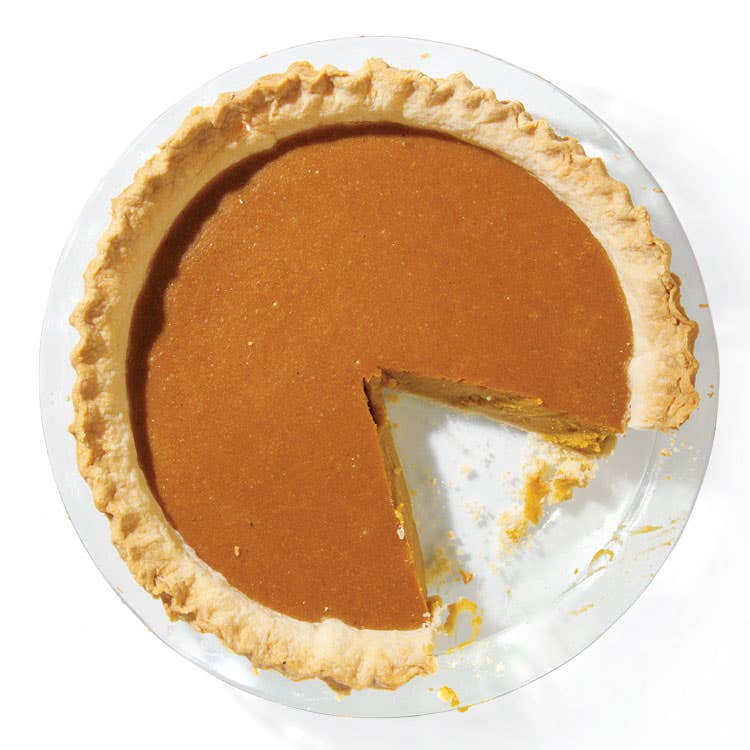
Every autumn, around mid-September, I start to prowl the garden at my home in Maine, peeking under broad pumpkin leaves to count the fruit for future pies. By October, when my pumpkins, a variety aptly named new england pie, have grown to the size of cantaloupes, I harvest them. They're perfectly portioned, averaging one pie apiece. And so I begin to plot my Thanksgiving baking.
Pumpkin pie has always had a special place on my table. For me, a historian of early-American foods, it is the most authentic American dessert. Apple pie, despite the old saying, is British; it crossed the Atlantic with English settlers. It was only after they and their descendants—for whom the easy-to-grow native pumpkin proved a godsend through the hungriest years—adapted their old-world recipes to this new-world ingredient that custardy, spiced pumpkin pie as we know it today came to be.
The primary antecedents were the 18th-century British "puddings"—that is, custard mixed with mashed fruits or vegetables and baked in a pastry shell. In the 1747 book The Art of Cookery, the English writer Hannah Glasse provided instructions for making a "potato pudding" of regular or sweet potatoes, sherry or white wine, sugar, currants, eggs, and butter or cream. The small evolution from that dessert to one made with pumpkins first appeared in 1796, with a recipe for pumpkin pudding very similar to Glasse's potato version in Amelia Simmons's American Cookery, the first stateside cookbook.
That book also contained a recipe for pumpkin pudding that called for ginger, nutmeg, and mace, which soon took hold as pumpkin pie's signature spices. By the mid-1800s, as Northeasterners migrated west, they took that dessert, which by then was called pie, with them. After 1863, when Thanksgiving was declared an official holiday and many of its customs were codified, the association of pumpkin with early settlers made the pie a de rigueur holiday dessert.
For much of the last century, the making of a Thanksgiving pumpkin pie has begun with opening a can of Libby's; that 144-year-old Chicago-based company cans close to 50,000 tons of pumpkin every year. Say what you will about canned pumpkin, it has proven to be very good for the survival of pumpkin pie as the iconic Thanksgiving dessert. During the past decade or so, however, the proliferation of farmers' markets has made all sorts of cooking pumpkin available across the United States. The ones used by New England settlers and those grown today are all Cucurbitas, a genus of the gourd. Many of the pumpkins used for baking come under the species Cucurbita moschata, which includes low-moisture, creamy-fleshed varieties such as the neck pumpkin and the dickinson field pumpkin (the one that's typically canned), and even the butternut squash. Bake a pie using a jack-o'-lantern variety like magic lantern or appalachian, though, and the result will be a filling that's fibrous and vegetal.
Whatever kind of fresh pumpkin you choose, you'll need to roast or steam the flesh first, and be sure to drain it before mashing and combining with the other ingredients, as excess moisture can cause the custard to separate during baking. Sometimes I substitute evaporated milk for cream in the filling because it makes for an especially luscious texture. After all, if Thanksgiving celebrates anything, it's that those early lean times are over.
Keep Reading
Continue to Next Story










